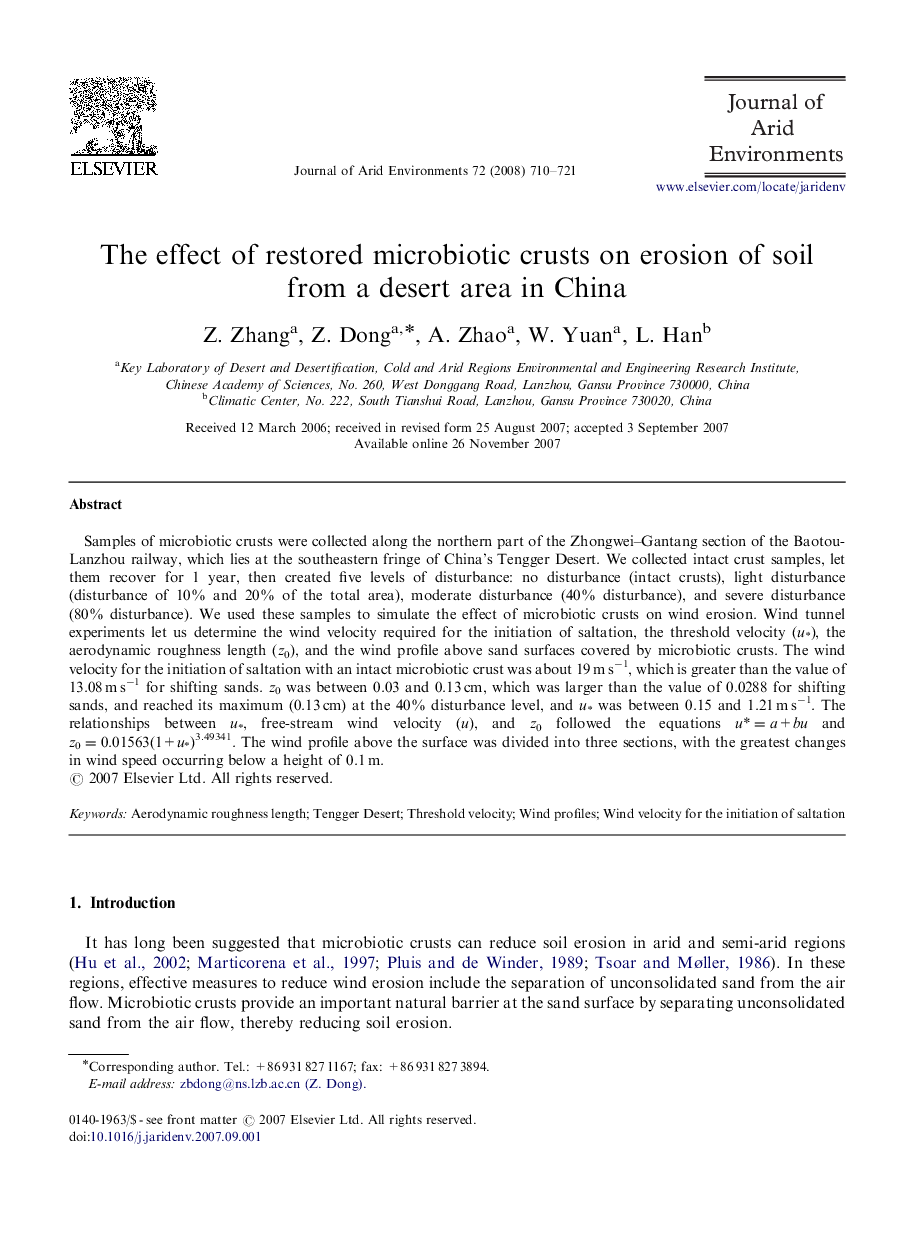| Article ID | Journal | Published Year | Pages | File Type |
|---|---|---|---|---|
| 4394412 | Journal of Arid Environments | 2008 | 12 Pages |
Samples of microbiotic crusts were collected along the northern part of the Zhongwei–Gantang section of the Baotou-Lanzhou railway, which lies at the southeastern fringe of China's Tengger Desert. We collected intact crust samples, let them recover for 1 year, then created five levels of disturbance: no disturbance (intact crusts), light disturbance (disturbance of 10% and 20% of the total area), moderate disturbance (40% disturbance), and severe disturbance (80% disturbance). We used these samples to simulate the effect of microbiotic crusts on wind erosion. Wind tunnel experiments let us determine the wind velocity required for the initiation of saltation, the threshold velocity (u*), the aerodynamic roughness length (z0), and the wind profile above sand surfaces covered by microbiotic crusts. The wind velocity for the initiation of saltation with an intact microbiotic crust was about 19 m s−1, which is greater than the value of 13.08 m s−1 for shifting sands. z0 was between 0.03 and 0.13 cm, which was larger than the value of 0.0288 for shifting sands, and reached its maximum (0.13 cm) at the 40% disturbance level, and u* was between 0.15 and 1.21 m s−1. The relationships between u*, free-stream wind velocity (u), and z0 followed the equations u*=a+bu and z0=0.01563(1+u*)3.49341. The wind profile above the surface was divided into three sections, with the greatest changes in wind speed occurring below a height of 0.1 m.
